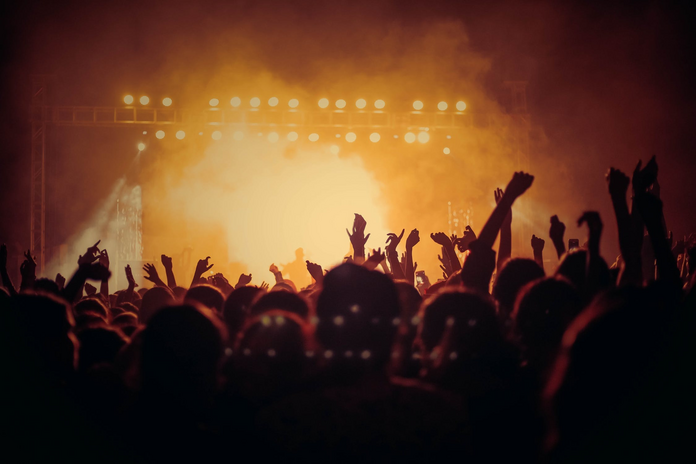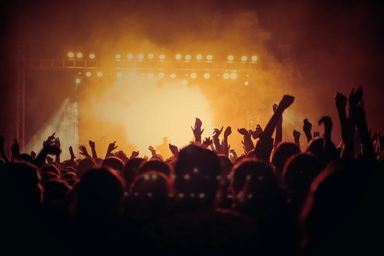In the wake of the Astroworld tragedy, many have been quick to blame Travis Scott, security, the attendees or some combination of these elements. While all of these did play a role, one of the most dangerous and under-recognized dangers of this post-tragedy analysis is festival-style seating.
The problem with event safety appears to be twofold: crowd management is not taken seriously enough and blame is directed too much or too little at the wrong people and institutions. Time and time again we have seen tragedy strike at events meant to be fun and memorable. Many of these events have one commonality– festival seating.
Astroworld is a music festival co-founded by rapper Travis Scott in Houston. The crush happened during Scott’s set and resulted in 300 injuries, 25 hospitalizations, and 11 deaths. As fans pushed into the barriers toward the front of the stage, many people collapsed, unable to get air. Unconscious bodies crowd-surfed like limp ragdolls to the medical station. Or the lucky ones did at least and others were trampled.
One of the most famous concert disasters was also that which Astroworld was most frequently compared to by news outlets. In 1979, fans waiting outside the Riverfront Coliseum in Cincinnati became entangled in a crush as they pushed towards the doors. The aftermath was gruesome with some accounts describing how one was disemboweled during the frenzy. Ultimately 11 attendees would perish as a result– the same number of fans who died at Astroworld.
The safety surrounding festival seating, or non-assigned seating, was called into question after both events. Where assigned seating allows for some space between patrons, festival seating isn’t actually seating at all as attendees stand packed together tightly. Festival seating incentivizes attendees to arrive early to events to scope out the best spots.
Let us tackle this first misconception about crowd safety. Many are unaware of just how deadly crushes can be and in turn, provide insufficient security and safety preparation efforts. In order to convey the danger of crushes, John Fruin, author of “The Causes and Prevention of Crowd Disasters,” wrote, “At occupancies of about 7 persons per square meter the crowd becomes almost a fluid mass. Shock waves can be propagated through the mass sufficient to lift people off of their feet and propel them distances of 3 m (10 ft) or more. People may be literally lifted out of their shoes, and have clothing torn off. Intense crowd pressures, exacerbated by anxiety, make it difficult to breathe.” Some who fall unconscious while being propped up by the crush die standing up. Others die in pileups that follow a “crowd collapse,” when someone falls down, and more people fall over, as was seen in Astroworld.
Immediately following the tragedy in Cincinnati, there was little sympathy for the victims. The stories published about the crush described the crowd as wild and drug-crazed. Blame was placed squarely on the attendees for causing the crush in the first place despite no security presence, a police force who walked off the scene and only two narrow doors that would act as an entrance for 8,000 fans. The day after The Who concert crush, the Cincinnati Enquirer ran the headline “Deaths Shocked Some, But Others Didn’t Care” on its front page.
After Astroworld, vitriol from the internet was directed at Travis Scott for not stopping the show when the first attendee fell unconscious (or at least when the ambulance pulled up mere feet from him). Scott faced accusations that ranged from insensitivity to demonic possession. Many were more quickly pouncing on the idea of an occult presence at the festival than the idea of a failed safety mechanism had failed again. Scott already has a longstanding reputation for letting chaos run loose at his shows. He must be held responsible as an event organizer and a cofounder of Astroworld rather than someone who is only performing. With all of this at play, festival seating at what was bound to be a chaotic show was a recipe for disaster.
Paul Wertheimer, a crowd safety expert who was brought in by many venues for safety consulting after The Who crush, believes that festival seating is inherently dangerous and while it is permitted at high-energy events like music festivals, people will get injured and killed. He has since spoken on Astroworld and other similar tragedies from the last three decades, always citing festival seating as a major risk that played into the severity of the tragedy.
“One thing is clear, effective crowd management at events such as rock concerts is too important to be left to those who refuse to put public safety first,” Wertheimer said. “If promoters and facility operators are not willing voluntarily to ban festival seating, then it’s time the public and their political representatives did.”


